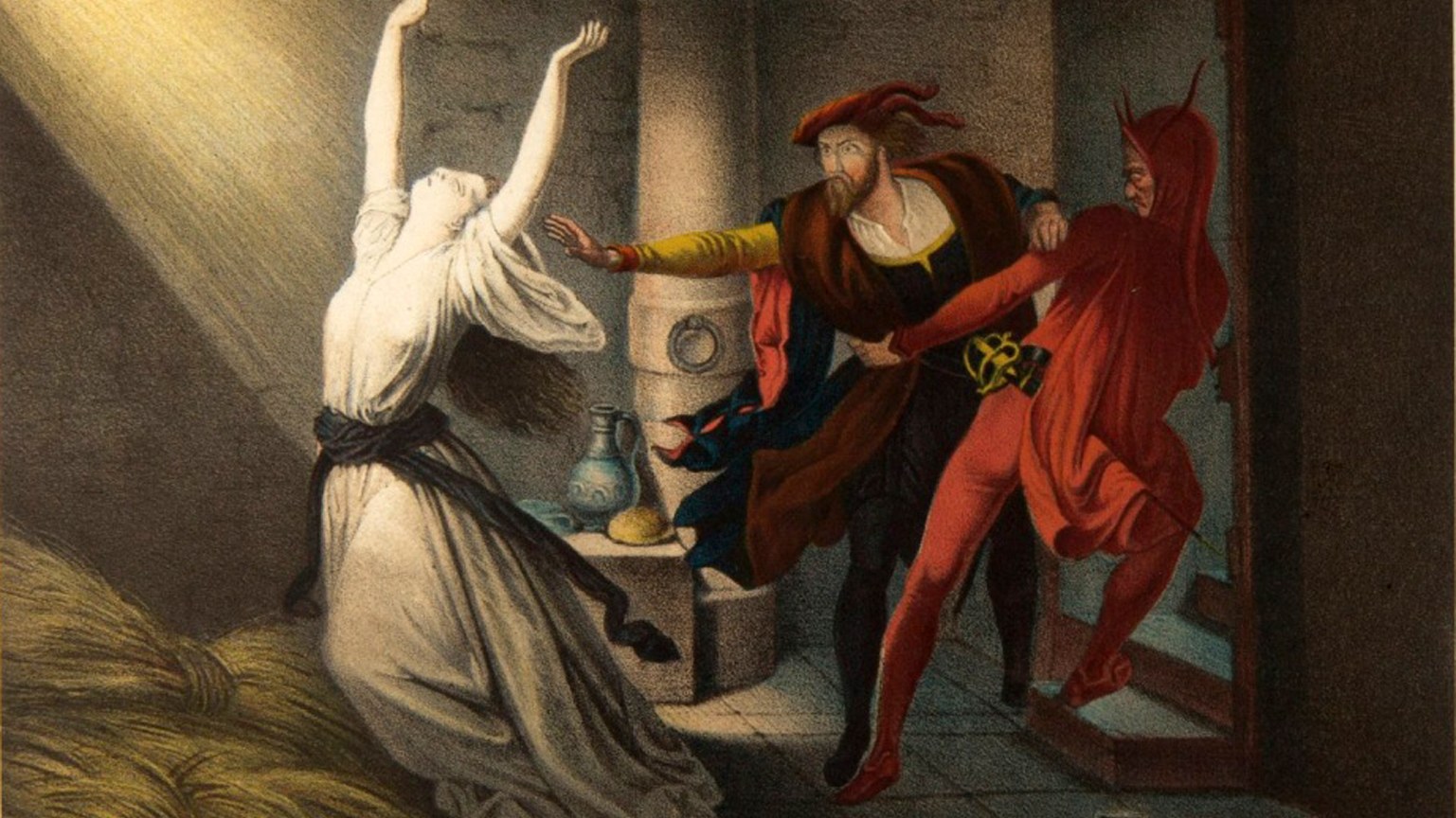As a teenager, Richard Wagner developed a fascination with Goethe’s Faust.
Allegedly, at the age of 16, Wagner hid a copy of the play among his school books. For the rest of his life, allusions to Faust, and direct quotations, recurred throughout his writings.
The Faustian archetype, in which the protagonist, in a deal with the devil, exchanges his soul for unlimited knowledge and worldly pleasures, inspired music by numerous composers including Liszt, Schumann, Berlioz, Gounod, Mahler, and Prokofiev. A Faust Overture, first composed in 1840 and revised in 1855, is one of Wagner’s earliest works. It is a rare example of music Wagner composed for the concert hall rather than the opera stage. Originally, the Overture was conceived as the first movement of a “Faust” Symphony, a project which the composer later abandoned.
The conductor Hans von Bülow, one of Wagner’s earliest and most dedicated champions, interpreted the Faust Overture not as a character portrait, but as a broader expression of “mankind’s universal sufferings and desires.”
Set in tragic D minor, the Overture begins in the depths of the orchestra with a single wandering line, played by the tuba and basses. The other strings awaken with restless, ghostly utterances. If this initial theme represents Faust, a contrasting theme, emerging with octave leaps in the violins, signifies Gretchen. Moving from D to E-flat to C-sharp, the theme is both expansive (as a result of its octave jumps), and tensely compact (as a result of its chromaticism). It might remind you of the similarly searching theme which opens the Adagio of Bruckner’s Ninth Symphony, also in D minor.
Unfolding in sonata form, the Overture’s drama encompasses fiery, tempestuous passion and heroism. In the final moments, with a wispy ascending scale in the violins, the ephemeral spirit seems to float away. The coda section delivers serene transcendence.
Wagner conducted the premiere in Dresden on July 22, 1844. In this May 21, 2013 performance, commemorating the anniversary of Wagner’s birth, Christian Thielemann leads the Staatskapelle Dresden:
Recordings
- Wagner: A Faust Overture, Christian Thielemann, Staatskapelle Dresden Naxos
Featured Image: “Faust und Mephisto im Kerker” (1846), Joseph Fay

